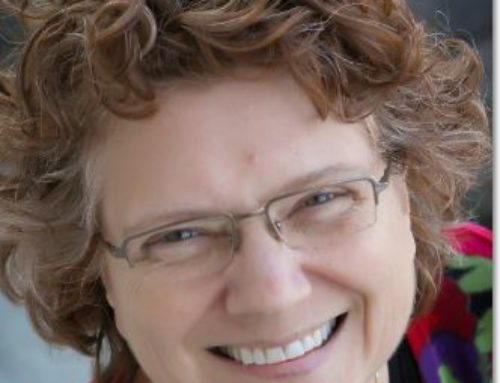HETL Note:
In this academic article, authors Drs. André L. Honorée, Tará Burnthorne Lopez, and Harold E. Davis, discuss the how universities and colleges can increase quality assurance of learning processes and how to increase engage of faculty in this effort, which is especially important for accreditation purposes. More specifically, the authors examine the phenomenon of social loafing in work teams, which can have a negative effect on quality assurance of learning. In this case study, the authors make several recommendations that universities and colleges can use to help them adapt their structures to improve assurance of learning through self-managed work teams.
Author Bios:
 Dr. André L. Honorée is the Director of the MBA program and an Associate Professor of Management at Southeastern Louisiana University (USA). As a faculty member he has served on a wide variety of departmental, college and university-wide service committees including being the Director of the College of Business’ Assurance of Learning Initiative regarding accreditation agency compliance. Over the last twenty years he has taught a variety of undergraduate business courses and the capstone course in the MBA and Executive MBA programs. He has published in a diverse set of journals with his primary research interests including employment law and compensation issues. André received his Ph.D. from the University of Mississippi and was a Business Division faculty member previously at Spring Hill College. Dr. Honorée may be contacted at [email protected].
Dr. André L. Honorée is the Director of the MBA program and an Associate Professor of Management at Southeastern Louisiana University (USA). As a faculty member he has served on a wide variety of departmental, college and university-wide service committees including being the Director of the College of Business’ Assurance of Learning Initiative regarding accreditation agency compliance. Over the last twenty years he has taught a variety of undergraduate business courses and the capstone course in the MBA and Executive MBA programs. He has published in a diverse set of journals with his primary research interests including employment law and compensation issues. André received his Ph.D. from the University of Mississippi and was a Business Division faculty member previously at Spring Hill College. Dr. Honorée may be contacted at [email protected].
 Dr. Tará Burnthorne Lopez is an Associate Professor of Marketing at Southeastern Louisiana University (USA). She has published in the Journal of Business Research, Journal of Personal Selling and Sales Management, the Journal of Marketing Education, and the Journal of Marketing Theory and Practice, among others, and has presented papers at many international, national, and regional conferences. Her primary research interests are marketing education and the role of professional selling in marketing strategy. Tará completed her doctoral work at Louisiana Tech University and has also held positions at the University of Southern Mississippi and Mississippi College. Dr. Lopez may be contacted at [email protected].
Dr. Tará Burnthorne Lopez is an Associate Professor of Marketing at Southeastern Louisiana University (USA). She has published in the Journal of Business Research, Journal of Personal Selling and Sales Management, the Journal of Marketing Education, and the Journal of Marketing Theory and Practice, among others, and has presented papers at many international, national, and regional conferences. Her primary research interests are marketing education and the role of professional selling in marketing strategy. Tará completed her doctoral work at Louisiana Tech University and has also held positions at the University of Southern Mississippi and Mississippi College. Dr. Lopez may be contacted at [email protected].
 Dr. Harold E. Davis is an Associate Professor of Accounting in the College of Business at Southeastern Louisiana University (USA). Dr. Davis’ early career was as an auditor and later as a systems analyst and programmer. In his academic career, he has taught a variety of undergraduate business courses with a focus on principals of financial accounting as well as graduate and undergraduate accounting information systems. Dr. Davis seeks to leverage changes in technology to benefit teaching and learning in his courses and has research interests in the impacts of technology on business processes and accounting. Dr. Davis has been with Southeastern Louisiana University for 14 years, and may be contacted at [email protected].
Dr. Harold E. Davis is an Associate Professor of Accounting in the College of Business at Southeastern Louisiana University (USA). Dr. Davis’ early career was as an auditor and later as a systems analyst and programmer. In his academic career, he has taught a variety of undergraduate business courses with a focus on principals of financial accounting as well as graduate and undergraduate accounting information systems. Dr. Davis seeks to leverage changes in technology to benefit teaching and learning in his courses and has research interests in the impacts of technology on business processes and accounting. Dr. Davis has been with Southeastern Louisiana University for 14 years, and may be contacted at [email protected].
Using Self-Managed Work Teams to Combat Social Loafing and Increase Faculty Engagement in Assurance of Learning Processes
André L Honorée, Tará B Lopez, Harold E Davis
Southeastern Louisiana University, USA
Abstract
One of the primary accreditation challenges facing higher education is the engagement of the faculty in the assurance of learning (AOL) process. Many faculty feel that assessment activities add to their workload while only serving to check a box rather than resulting in real value. This paper posits that one of the key impediments to higher faculty engagement in this process is that of “social loafing.” Types and factors leading to social loafing (productivity loss often found in groups) are detailed along with their resultant negative impact on the AOL process. Through utilization of a case study, the paper advances the use of self-managed work teams as a solution to this phenomenon. Self-managed work teams offer an easy-to-implement approach to generating genuine faculty engagement. The case study outlines the implementation of discipline-based curriculum teams (DCTs), a specific type of self-managed work team, suggesting their many advantages and justifications for how they improve faculty engagement in committee work assignments. Suggestions for the specific design (e.g., size, incentives, structure) and implementation of DCTs are advanced to serve as a guide to ensure faculty engagement in AOL and benefit student learning outcomes.
Keywords: Faculty Engagement, Assurance of Learning, Self-managed Work Teams, Accreditation
Introduction
Guided by accrediting organizations, Higher Education’s approach to assessment has evolved from assessment as an administrative function to one driven by faculty to document student learning. This shift emphasizes direct assessment of learning (AOL) as the primary performance indicator for educational institutions. This shift also places greater responsibility on faculty to participate in what was previously considered administrator’s work (Andrade, 2011; Bucalos, 2014). As universities have initiated new processes to respond to this shift in responsibility, they often find that faculty reactions vary greatly. At one end of the spectrum, some faculty are “early adopters” who, at the beginning of the shift, are fully engaged in the assurance of learning process, while at the opposite end of the spectrum, some faculty are never engaged in assurance of learning efforts or may even actively work against them. Faculty elect to meter their engagement for a number of reasons including fear or uncertainty, practicality, and even weariness (Andrade, 2011). However, faculty engagement in assurance of learning efforts is crucial if a program hopes to achieve a sustainable assurance of learning program that leads to ongoing and meaningful development in quality teaching and learning.
Based on the authors’ firsthand experience as members of a college-wide assessment committee (the AOL committee), one way in which faculty’s lack of engagement may manifest is in the organizational behavior phenomenon of “social loafing.” Social loafing can help explain the less than desirable levels of faculty engagement in the assurance of learning process. An analysis of the concept of social loafing suggests that while there are a variety of reasons for faculty limiting their involvement in assurance of learning efforts, one significant reason is the manner in which many organizations incorporate faculty in the process. Through an attempt to understand less-than-optimal faculty engagement within their college, the authors discovered that committee structures can exacerbate the problem of social loafing.
A solution to the social loafing problem is offered in the form of self-managed work teams (SMWT). Based on the successful implementation of this novel assurance of learning structure at their institution, the authors recommend this approach to engage faculty.
Faculty Engagement and Social Loafing
Administrators can lead and coordinate the assessment process, but without real engagement of faculty, their efforts can only be superficial and without meaningful impact on student experiences (Bucalos, 2014; Garrison and Rexeisen 2014). To achieve the desired result of a degree program’s continuous improvement, accrediting agencies suggest that successful assurance of learning processes should have a significant number of faculty who are actively involved. However, in some instances, even though faculty are involved, their efforts reflect a “checklist” mentality rather than a sincere appraisal of student learning. Institutions need a true commitment among faculty members to create a sustainable assessment program that impacts the learning and growth of each student (Bucalos, 2014). While faculty engagement and active participation in the process are repeatedly advocated in directives from accreditation agencies and its consultants, it is often easier said than done. Studies repeatedly show that faculty are either not involved or are involved but disengaged in the process (Wang and Hurley, 2012).
Lack of faculty engagement can be viewed from the theoretical perspective of social loafing, which has been described as one explanation for productivity loss that is found in groups (George, 1992). Social loafing is the tendency for individuals to decrease their efforts when they work in groups rather than individually (Latane, Williams, and Harkins 1979) and has been found to take place in a diverse set of locations and activities (Earley, 1989; Harkins, Latane, and Williams 1980). But why would individuals’ efforts and productivity decrease as members of a larger group? A number of studies have offered explanations for social loafing, including the “hide in the crowd” effect and the “sucker” effect.
The “hide in the crowd” effect (Latane et al. 1979; Karau and Williams 2001), suggests that when group members’ contributions are not individually recognized, group members realize that their chances of being singled out for credit or blame is doubtful. Due to the anonymous nature of the group’s output, members are not properly incented to perform or fully participate in the process. Two reasons are suggested for this reduction in effort/participation. First, Harkins et al. (1980) suggest that this results from a rational pursuit of self-interest whereby individuals attempt to maximize their payoffs by minimizing their efforts for a given level of reward. Given the myriad of duties faculty members are being asked to perform with regards to teaching, research and service, such a calculation of getting the most “bang for the buck” for their efforts seems plausible. The second reason for the “hide in the crowd” effect is the wish by some to “free ride” on the efforts of others in the group (Albanese and Van Fleet, 1985). This results in some individuals choosing to let “someone else do it” (Orbell and Dawes, 1981) and thus benefit from the efforts of others while putting forth little effort themselves. This is especially common if they expect others to do a good job and, therefore, their efforts are not necessary (Karau and Williams, 1993).
Another explanation for social loafing by group members is due to the “sucker effect.” The sucker effect (Orbell and Dawes, 1981) refers to group members’ fear that others in the group may free-ride off of their efforts. Because few wish to be taken for a sucker, these individuals decide to reduce their levels of effort/participation because they feel that others in the group are planning to do the same. Kerr (1983) advances three major reasons (or violations of norms) why individuals avoid being perceived as a sucker. First, it violates an equity norm because these individuals are aware that free riders are receiving the same level of rewards with less input and/or effort (Adams, 1963; Carrell and Dittrich, 1978; Goodman and Friedman, 1971; Huseman, Hatfield, and Miles 1987; Pritchard, 1969). Second, individuals believe that everyone should do their fair share and thus free riders are violating the norm of social responsibility. Finally, they believe that their contributions to the group have benefited others and thus others have a responsibility to reciprocate. Free riders thus violate the norm of reciprocity.
Whether due to an ability to “hide in the crowd” or simply wishing to avoid being a “sucker,” social loafing may explain why some faculty are often not contributing as much as they could to the continuous improvement efforts of their college. It is unrealistic to expect one hundred percent of the faculty to embrace assurance of learning, but through an understanding of the causes of disengagement and with deliberate planning, it is possible to improve faculty engagement.
How a New Assessment Process Resulted in Disengaged Faculty
While some institutions have an assessment office that leads assessment efforts, many institutions, including that of the authors, lack the resources to support such an office (Andrade, 2011). Therefore, the effort and responsibility for assessment typically falls to a committee. At the author’s institution, a university-level committee, consisting of representatives from each college, was responsible for assessment for the university’s regional accreditation; while a college-level committee, consisting of representatives from each discipline, was responsible for assessment for the college’s accreditation. Directives related to the university-level assurance of learning efforts were sprinkled about the college through its two committee members, emails to department heads, and infrequent administrator meetings. The result was task-focused efforts without any real ownership.
It is reasonable to expect efforts related to a college’s accreditation rather than a university’s accreditation to stimulate more faculty involvement because the outcome of such efforts is more directly related to their field of study and interest. The present university was no exception to this (Andrade, 2011). With the college’s accreditation team visit looming on the horizon, a committee was formed and charged with developing and implementing a wholly new assurance of learning process during the summer semester. Armed with the list of accreditation standards related to assurance of learning and websites for aspirant institutions, the committee labored dutifully and presented the new assurance of learning process to faculty at the fall convocation.
By design, the new assurance of learning activities touched as many faculty members as possible, either through administration of assessments in their classes or through college-wide meetings. Yet, while this process intentionally involved all faculty, for the most part, the efforts of coordinating the process from initiation through closing the loop fell on a relatively small number of faculty. Though all faculty members were informed and consulted regularly, the vast majority remained isolated from and disengaged in the process. In other words, they elected to “hide in the crowd.” The college committee members were baffled and frustrated by many of their colleagues’ on-going social loafing. As explained below, assurance of learning programs that are organized in this (or a similar) manner are often not very conducive to the engagement of faculty that would lead to the generation of meaningful ideas or motivating them to participate in the continuous improvement activities required of a successful assessment program (Davies, 2009; Karau and Williams 2001).
How a Committee Design Led to Social Loafing and a Disengaged Faculty.
The committee structure and design of assurance of learning processes at both the university- and college-levels were developed in response to a critical need to develop additional assessment processes and documentation to meet relatively new assurance of learning accreditation standards. It is understandable that, at the time it was happening, everyone was task- rather than big picture-oriented. An analysis of this case, with the benefit of hindsight, gives one an excellent opportunity to see how this design contributed to social loafing.
Research indicates that social loafing is more likely to occur the larger the group (Aggarwal and O’Brien, 2008). The structure of the assessment process sought formal feedback through college-wide meetings. The assurance of learning process, while said to involve all faculty, instead suffered from minority domination and with too many faculty who chose either not to participate or to do so at a level lower than their capabilities. Because committees made the majority of the decisions and were responsible for the lion’s share of the work to be completed, the majority of the faculty had very little motivation to be actively engaged in the process, and, as a result, a significant amount of social loafing occurred.
Social loafing is also more likely to occur when there is a lack of incentive (Karau and Williams, 1993). Shortages of resources plague many education institutions, including the one in this case study. However, incentives can come in a variety of forms. For example, faculty are more motivated to engage in assessment when it is focused on student learning (Andrade, 2011). Paradoxically, faculty often begin the assurance of learning planning process with a “checklist” rather than a “student learning” mentality (Hutchings, 2011). The top-down design of the college’s committee structure presented in this paper reinforced a “checklist” mentality among those faculty not directly responsible for some part of the assessment process.
Social loafing is more likely to occur when group members aren’t highly invested in the opinions of or don’t identify strongly with other group members (Karau and Williams, 1993; Whiteoak, 2007). When team members are highly respected and relevant, participants are more likely to engage and produce quality outputs. Cohesive groups experience less social loafing than non-cohesive groups (Liden, Wayne, Jaworski, and Bennett 2004; Whiteoak, 2007). Aside from the standing assessment committees, faculty participated in assurance of learning activities on an ad hoc basis. During college-wide meetings, faculty were grouped randomly with the goal of achieving cross-disciplinary synergies. However, these groups were not cohesive and had no focused goal or bond on which to base expectations.
Social loafing is more likely to occur when group participants place little value on the task (Karau and Williams, 1993; Zaccaro, 1984). By design, the committee involved as many faculty as possible in the tasks associated with the assessment of student learning. The idea was that this would engage more people in the process and minimize complaints because no one could complain about the increased workload if everyone shared equally in the tasks that needed to be completed. Rather than feeling a part of the process, faculty viewed this as a tedious, low-enrichment task that took up valuable time. Due to the centralization of accountability of the committee structure, few faculty members were accountable for the more value-laden, enriching tasks such as evaluating assessment results to identify student growth opportunities. Thus, based on comments and complaints offered to committee members, most faculty felt assessment efforts were of little value. Such perceptions by faculty members, about the usefulness of assessment efforts, are not uncommon (Garrison and Rexeisen, 2014).
Though intended to include all faculty, the existing assessment process design involved all faculty but did not engage them, resulting in social loafing, and an obviously immature assessment process. The need for change, while recognized by the assurance of learning committee members, became more urgent following the college’s accreditation team visit. The college was not reaffirmed and the accreditation visitation team recommended a one-year continuous improvement review, citing the immature assurance of learning process as one reason.
From Crisis Comes Change: Self-Managed Work Teams
While significant changes were implemented to meet the accreditation team’s concerns, the fundamental lack of faculty involvement was still present, and with a second accreditation review in the not-too-distant future and limited faculty-led continuous improvement/corrective actions generated, there was a growing urgency and fear that the college’s existing assurance of learning process would not lead to reaffirmation of accreditation. Wishing to address what was perceived to be a fundamental weakness of the previous assurance of learning process, lack of faculty engagement through social loafing, a new plan was developed with the goal of engaging all faculty in the process. The structure of this new plan was based on the concept of self-managed work teams (SMWT).
Also known as self-directed, self-maintaining, self-leading, and self-regulating work teams, SMWT can be defined as “groups of employees who are responsible for a complete, self-contained package of responsibilities that relate either to the final product or an ongoing process” (Attaran and Nguyen, 1999, p. 24). Research on the benefits of self-managed work teams provides many reasons for their use. Self-managed work teams have been found to increase productivity, quality of outputs, employee satisfaction, quality of work life, and has decreased absenteeism and turnover (Neck, Manz, and Anand 2000; Cohen and Ledford, 1994; Corderey, Mueller, and Smith 1991; Verespej, 1990). SMWT offered the potential to overcome the main weaknesses of the previous committee structure.
Discipline Curriculum Teams
The college’s new self-managed work teams were named Discipline Curriculum Teams (DCTs). Each degree program within the college had a DCT comprised of all faculty within the degree program (e.g., the authors’ college had six degree programs/disciplines and thus six DCTs). Within each DCT, one faculty member was selected by their colleagues to be a DCT leader, who had the responsibility to lead the team as directed by the college assurance of learning committee guidelines. However, the DCT leader could not be a college assessment committee member, thus encouraging more faculty involvement in the administration of the new assessment process and not overburdening college assurance of learning committee members. This structure resulted in a number of autonomous teams that were each empowered to address the multitude of tasks the ongoing assurance of learning process entails. It was significant that the members of the six DCTs were labeled as teams and not simply committees or small groups. While the word “teams” was used to strongly differentiate it from the previous structure and encourage a sense of cohesion amongst the DCT members, research suggests additional relevant distinctions. Teams are different from other small groups in that they are more structured and have more specialized members and more formal operating procedures (Glaser and Klaus, 1966). The DCT structure embodied this difference from committees or simple groups by having faculty organized by specific disciplines. In addition, each DCT was required to keep minutes of their meetings and submit various outcomes (e.g., rubrics, assessment instruments, corrective action recommendations) following a defined timeline.
The Discipline Curriculum Team (DCT) structure was a significant departure from the previous assurance of learning structure utilized by the college. The first significant difference was that no longer was there simply a committee of faculty who were largely responsible for designing the process, implementing it, and making recommendations towards continuous improvement. In its place were six DCTs (representing the college’s six degree programs/majors) who were comprised of all the college’s faculty and organized by the degree programs in which they taught (not by department as the college’s departments were comprised of multiple degree programs teaching quite distinctive subjects). Departmental assessment committees tend not to be as effective as discipline-based committees because they lack the depth of understanding of what is important within each discipline (Hutchings, 2011). By structuring the DCTs around disciplines, faculty were better able to address student learning within that discipline. Within a discipline, group cohesiveness was improved as faculty shared a common interest. This not only benefited the student, but also made assessment more meaningful work, improved faculty motivation and engagement, and minimized social loafing.
The size of the DCTs ranged from a half-dozen to a dozen faculty members each. As a result, the ability of any faculty member to hide, free-ride, or feel like a sucker was greatly reduced. The authors’ belief that smaller groups would require faculty to be more engaged in the process and the generation of specific outcomes was borne out and is consistent with the self-managed work teams literature. While there may be disagreement on the exact number of members to compose a group, researchers seem to be in agreement that groups must be small enough to allow members to collectively make decisions rather than simply rely on formal hierarchical structures to drive their activities. For example, Weisman (2000) suggests that such teams should have fewer than ten members. While Dixon (1996) suggests teams should be comprised of five to fifteen members and Kulisch and Banner (1993) similarly recommends groups of six to fifteen members to complete a task from start to finish. With the assurance of learning process requiring so much to be accomplished by each DCT, these smaller teams created an ideal situation to increase faculty engagement. Each member of the DCT was now aware of the specific actions that needed to be accomplished and were more cognizant that their individual contributions were being monitored by their fellow group members. While peer pressure was almost nonexistent with the previous structure, the authors observed that accountability and wishing to work with colleagues proved a motivational factor in the faculty being more engaged by the DCT structure.
Key Characteristics of Self-Managed Work Teams
While maintaining a small size was relatively intuitive to bolster faculty engagement with the creation of the Discipline Curriculum Team structure, the authors also wished to incorporate other key elements of self-managed work teams. Thus the DCTs were formed considering the six key characteristics of self-managed work teams as put forth by Nahavandi and Malekzadeh (1999). First, each DCT has the power and responsibility to plan, organize and monitor its own work. DCTs may be given timelines, college learning goals, rubrics and targeted expectations from the college-wide Assurance of Learning (AOL) committee, but ultimately they are responsible for completing their obligations to the college’s assurance of learning process (e.g., devising instruments, doing the assessments, devising corrective actions in response to assessment results). Also, because they operate independently, they are less reliant on other faculty in order to complete their tasks. This is consistent with research that indicates that task independence leads to less social loafing (Liden et al. 2004). Second, each DCT is to be comprised with faculty who have the expertise and functional experience to complete the tasks. It is thus imperative that all faculty be made aware, through various forms of training (e.g., attending seminars, provide them with accreditation standards and examples, etc…) what specifically is being asked of them and then allow their diversity of knowledge and experiences to address the tasks before them. This is consistent with Davies’ (2009, p. 576) suggestion that “group work tasks are sufficiently complex, stimulating and challenging so that individuals will be less likely to ‘‘free-ride’’. Third, DCTs do not report to an outside manager, and fourth they have the authority to implement their decisions. Because DCT members are entrusted to have the assurance of learning knowledge (provided by the AOL Committee to all DCTs) and the experience of being faculty members, they are empowered to take action without having to wait for a supervisor’s approval. Fifth, DCTs coordinate and cooperate with the other DCTs (rather than with managers) by sharing ideas and seeing how their contributions fit in the college’s overall assurance of learning plan (e.g., assessment instruments, how to use rubrics, suggested corrective actions to meet deficiencies, etc…). Finally, while each DCT has a “leader” that ensures task completion and reporting to the college AOL committee, leadership itself rotates among members depending on the task at hand. In that each member of the DCT is individually responsible for specific tasks and thus leads the DCT to their completion.
Discussion
Meaningful faculty engagement in assurance of learning processes plays a vital role in the reaffirmation from accrediting bodies, helps to disburse the increased workload associated with accreditation standards, and is important in ensuring quality teaching and learning. The structure of committees plays an important role in determining the level of faculty involvement. One approach is to have a single committee charged with assurance of learning tasks formed at the college level with representation from each degree program. Such a structure can include as many faculty as possible in the assessment administration process; however, there is a risk that it will not yield improved engagement due to social loafing. This structure simply gives more people more work to do with no added value. Another approach that can be utilized to combat this problem is to reorganize the assessment process using one self-managed work team for each degree program as well as having a college committee that can provide oversight and accountability to the overall process. This process created more self-managed work teams (SMWT) with a smaller number of members and was proven to significantly increase faculty engagement in the assurance of learning process. In short, faculty members spent less time doing valueless work (e.g., discussing and implementing ways to improve student learning) and more time doing value-rich work (i.e., brainstorming closing-the-loop opportunities).
The authors observed that the use of such SMWT (i.e., DCTs) not only successfully increased the engagement level of the faculty, but it also led to a number of discernible and important improvements. First, faculty uniformly understood more details of the college’s assurance of learning plan (e.g., timeline, learning goals, targets, outcomes, etc…). As a result, the new decentralized structure made each faculty member more personally accountable to their colleagues in their discipline. Second, with this increased knowledge and better understanding of the process and its results, more faculty engaged in commentary on the means to improve the new process and have suggested corrective actions when interpreting the results. As this has always been the goal of any assurance of learning process, this result has been the most productive byproduct of the change in structure. Whereby in the past, many faculty were disinterested in the process and results, now the college wide and DCT meetings to discuss assessment results are spirited conversations with a significant increase in the number of faculty contributing to the discussion. Finally, this level of engagement and interest in results has lead to a more rigorous assessment process and the generation of a broader diversity of ideas to close the loop and take corrective actions. While employing SMWT required a relatively simple change in structure, these aforementioned outcomes have considerably improved the college’s assurance of learning process.
Future Implications
The implications of this case study reach out to other universities involved in meeting accreditation expectations as well as other tasks where faculty engagement is relevant. This is especially salient for accredited colleges where there is a lackluster faculty involvement in the assurance of learning process or other accreditation processes. The advance of SMWTs as an alternative way to structure the completion of these tasks could provide similar benefits to those espoused in this paper. This structure and its benefits would also be an important consideration for new programs that are seeking to become accredited and are developing their processes to comply with existing standards.
Future research could test the benefits of the implementation of SMWTs in the higher education environment, especially relating to accreditation processes. While the benefits noted in this paper were based on professional observations, other research could provide a scientific-based analysis by evaluating the attitudes and satisfaction of faculty as well as administrators who have adopted this approach. Furthermore, subsequent research could seek to establish a set of best practices related to the formation and operation of SMWTs that would provide additional benefits to those seeking to employ this method of organizing work structures.
References
Adams, J. (1963). Toward an Understanding of Inequity. Journal of Abnormal and Social Psychology, 67(1), 422-436.
Aggarwal, P. & O’Brien, C. (2008). Social Loafing on Group Projects: Structural Antecedents and Effect on Student Satisfaction. Journal of Marketing Education, 30(3), 255-264.
Albanese, R. & Van Fleet, D. (1985). Rational Behavior in Groups: The Free-Riding Tendency. Academy of Management Review, 10(2), 244-255.
Andrade, M. (2011). Managing Change—Engaging Faculty in Assessment Opportunities. Innovative Higher Education, 36(4), 217-233.
Attaran, M. & Nguyen, T. (1991). Succeeding with Self-Managed Work Teams. Industrial Management, July-August, 24-28.
Bucalos, A. (2014). Including Faculty in Accreditation Preparation: Boon or Bane? Assessment Update, 26(1), 5-6.
Carrell, M. & Dittrich, J. (1978). Equity Theory: The Recent Literature, Methodological Considerations, and New Directions. Academy of Management Review, 3(2), 202-209.
Cohen, S. & Ledford, G. (1994). The Effectiveness of Self-Managing Teams: A Quasi-Experiment. Human Relations, 47(1), 13-43.
Corderey, J., Mueller, W., & Smith, L. (1991). Attitudinal and Behavioral Effects of Autonomous Group Working: A Longitudinal Field Study. Academy of Management Journal, 34(2), 464-476.
Dixon, T. (1996). Communication, Organization, and Performance. Norwood, New Jersey: Ablex Pub Corp.
Earley, P. (1989). Social Loafing and Collectivism: A Comparison of the United States and the People’s Republic of China. Administrative Science Quarterly, 34(4), 565-581.
Garrison, M. J., & Rexeisen, R. J. (2014). Faculty Ownership of the Assurance of Learning Process: Determinants of Faculty Engagement and Continuing Challenges. Journal Of Education For Business, 89(2), 84-89
George, J. (1992). Extrinsic and Intrinsic Origins of Perceived Social Loafing in Organizations. Academy of Management Journal, 35(1), 191-202.
Glaser, R. & Klaus., D. (1966). A Reinforcement Analysis of Group Performance. Psychological Monographs, 80(13), 1-23.
Goodman, P. & Friedman, A. (1971). An Examination of Adam’s Theory of Inequality. Administrative Science Quarterly, 16(3), 271-288.
Harkins, S., Latane, B., & Williams, K. (1980). Social Loafing: Allocating Effort or Taking It Easy. Journal of Experimental Social Psychology, 16, 457-465.
Huseman, R., Hatfield, J., & Miles, E. (1987). A New Perspective on Equity Theory: The Equity Sensitivity Construct. Academy of Management Review, 12(2), 222-234.
Hutchings, P. (2011). From Departmental to Disciplinary Assessment: Deepening Faculty Engagement. Change, September/October, 36-43.
Karau, S. & Williams, K. (1993). Social Loafing: A Meta-Analytic Review and Theoretical Integration. Journal of Personality and Social Psychology, 65(4), 681–706.
Karau, S. J., & Williams, K. D. (2001). Understanding individual motivation in groups: The collective effort model. In Marlene Turner (ed.), Groups at work: Theory and Research (113-141). New York and London: Routledge.
Kerr, N. (1983). Motivation Losses in Small Groups: A Social Dilemma Analysis. Journal of Personality and Social Psychology, 45(4), 819-828.
Kulisch, T. & Banner, D. (1993). Self-Managed Work Teams: An update. Leadership & Organization Development Journal, 14(2), 25-29.
Latane, B., Williams, K., & Harkins, S. (1979). Many Hands Make Light the Work: The Causes and Consequences of Social Loafing. Journal of Personality and Social Psychology, 37(6), 822-832.
Liden, R.C., Wayne, S.J., Jaworski, R.A., & Bennett, N. (2004). Social Loafing: A Field Investigation. Journal of Management, 30(2), 285-304.
Davies, W. M. (2009). Groupwork as a Form of Assessment: Common Problems and Recommended Solutions. Higher Education: The International Journal Of Higher Education And Educational Planning, 58(4), 563-584.
Nahavandi, A. & Malekzadeh, A. (1999). Organizational Behavior: The person-organization fit., Upper Saddle River, New Jersey: Prentice-Hall.
Neck, C., Manz, C., & Anand, V. (2000). Self-Managing Teams in a Crystal Ball. In M.M. Beyerlein (Ed.), Work teams: Past, Present and Future (pp311-322). Netherlands: Springer.
Orbell, J. & Dawes, R. (1981). Social Dilemmas. In G. Stephenson & J.H. Davis (Eds.), Progress in Applied Social Psychology. Chichester, England: Wiley.
Pritchard, R. (1969). Equity Theory: A Review and Critique. Organizational Behavior and Human Performance, 4(2), 176-211.
Verespej, M. (1990). Self-Directed Work Teams Yield Long Term Benefits. Journal of Business Strategy, 11(6), 9-12.
Wang, X. & Hurley, S. (2012). Assessment as a Scholarly Activity? Faculty Perceptions of and Willingness to Engage in Student Learning Assessment. The Journal of General Education, 61(1), 1-16.
Weisman, D. (2000). The Effects of Team Goals, Feedback, and Communication on the Performance of Self-Directed Work Teams in an Applied Setting. Ph.D. dissertation, Florida State University.
Whiteoak, J. (2007). The Relationship Among Group Process Perceptions, Goal Commitment and Turnover Intention in Small Committee Groups. Journal of Business and Psychology, 22(1), 11-20.
Zaccaro, S. (1984). Social Loafing: The Role of Task Attractiveness. Personality and Social Psychology Bulletin, 10, 99-106.
This feature article was accepted for publication in the International HETL Review (IHR) after a double-blind peer review involving three independent members of the IHR Board of Reviewers and one revision cycle. Accepting editor: Asheley Jones
Suggested citation:
Honorée, A., Lopez, T. & Davis, H. (2016). Using self-managed work teams to combat social loafing and increase faculty engagement in assurance of learning processes. International HETL Review, Volume 6, Article 4, URL: https://www.hetl.org/using-self-managed-work-teams-to-combat-social-loafing-and-increase-faculty-engagement-in-assurance-of-learning-processes
Copyright © 2016 André L Honorée, Tará B Lopez and Harold E Davis
The authors assert their right to be named as the sole authors of this article and to be granted copyright privileges related to the article without infringing on any third party’s rights including copyright. The authors assign to HETL Portal and to educational non-profit institutions a non-exclusive license to use this article for personal use and in courses of instruction provided that the article is used in full and this copyright statement is reproduced. The authors also grant a non-exclusive license to HETL Portal to publish this article in full on the World Wide Web (prime sites and mirrors) and in electronic and/or printed form within the HETL Review. Any other usage is prohibited without the express permission of the authors.
Disclaimer
Opinions expressed in this article are those of the authors, and as such do not necessarily represent the position(s) of other professionals or any institution. By publishing this article, the authors affirm that any original research involving human participants conducted by the authors and described in the article was carried out in accordance with all relevant and appropriate ethical guidelines, policies and regulations concerning human research subjects and that where applicable a formal ethical approval was obtained.





